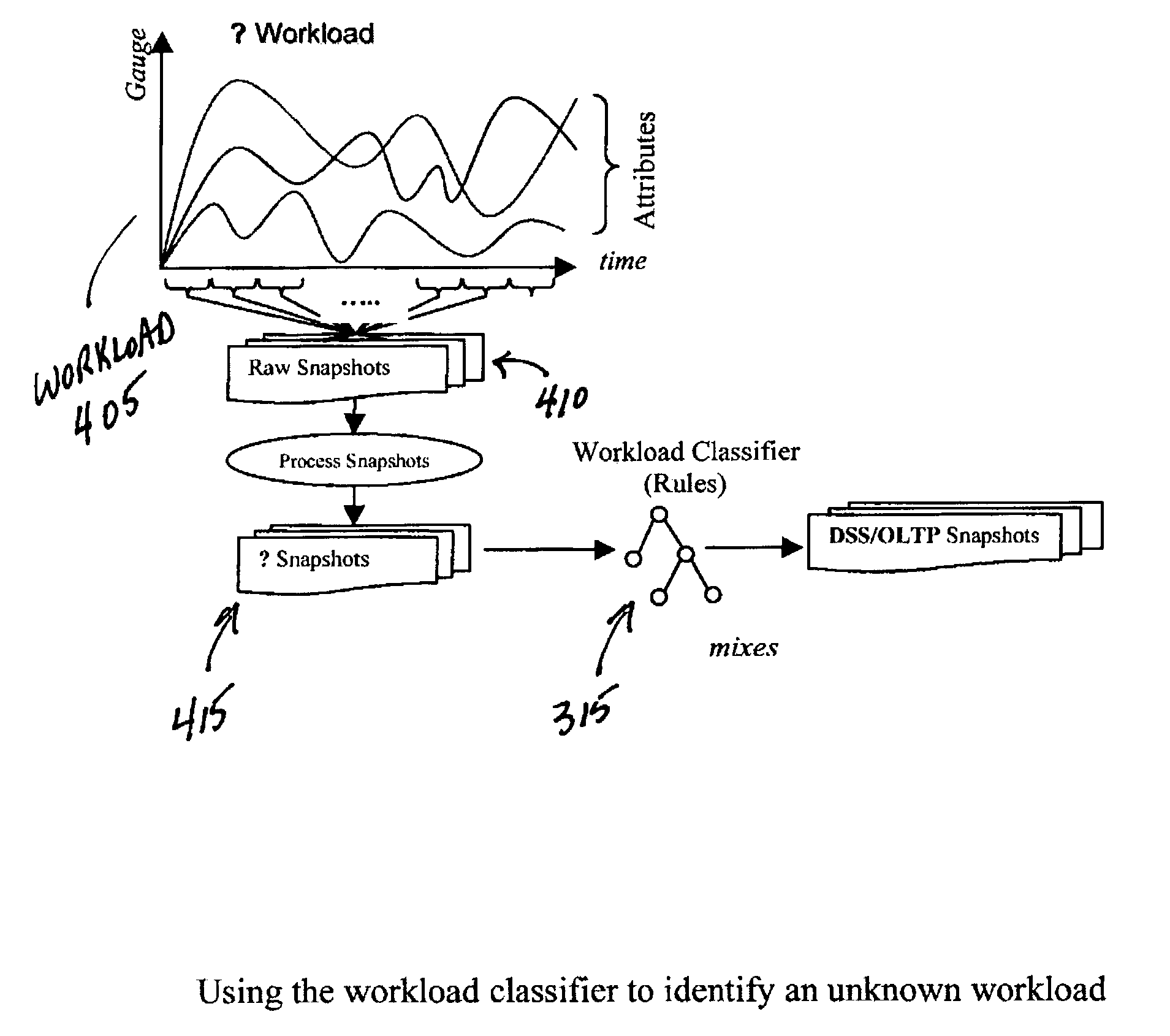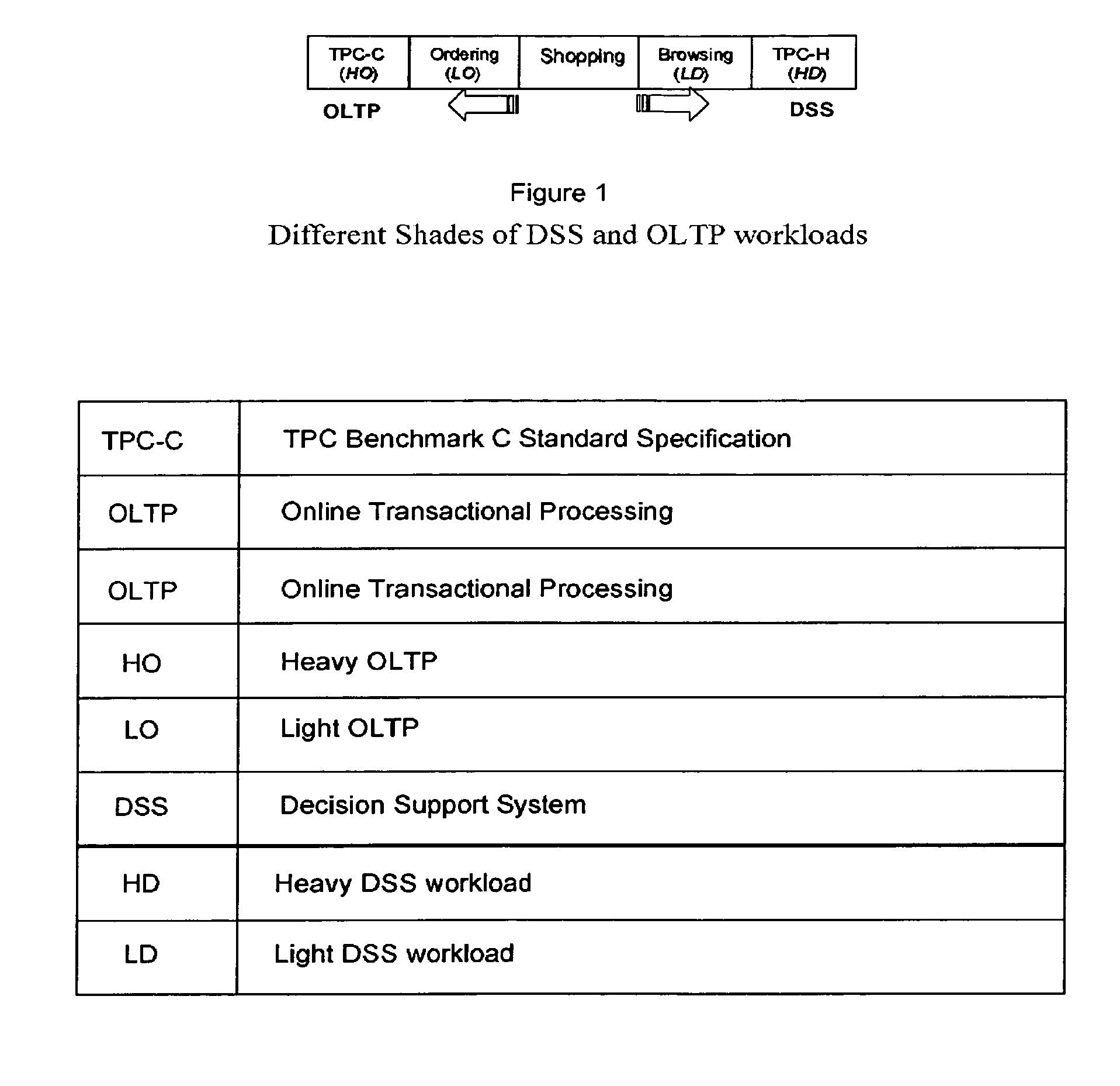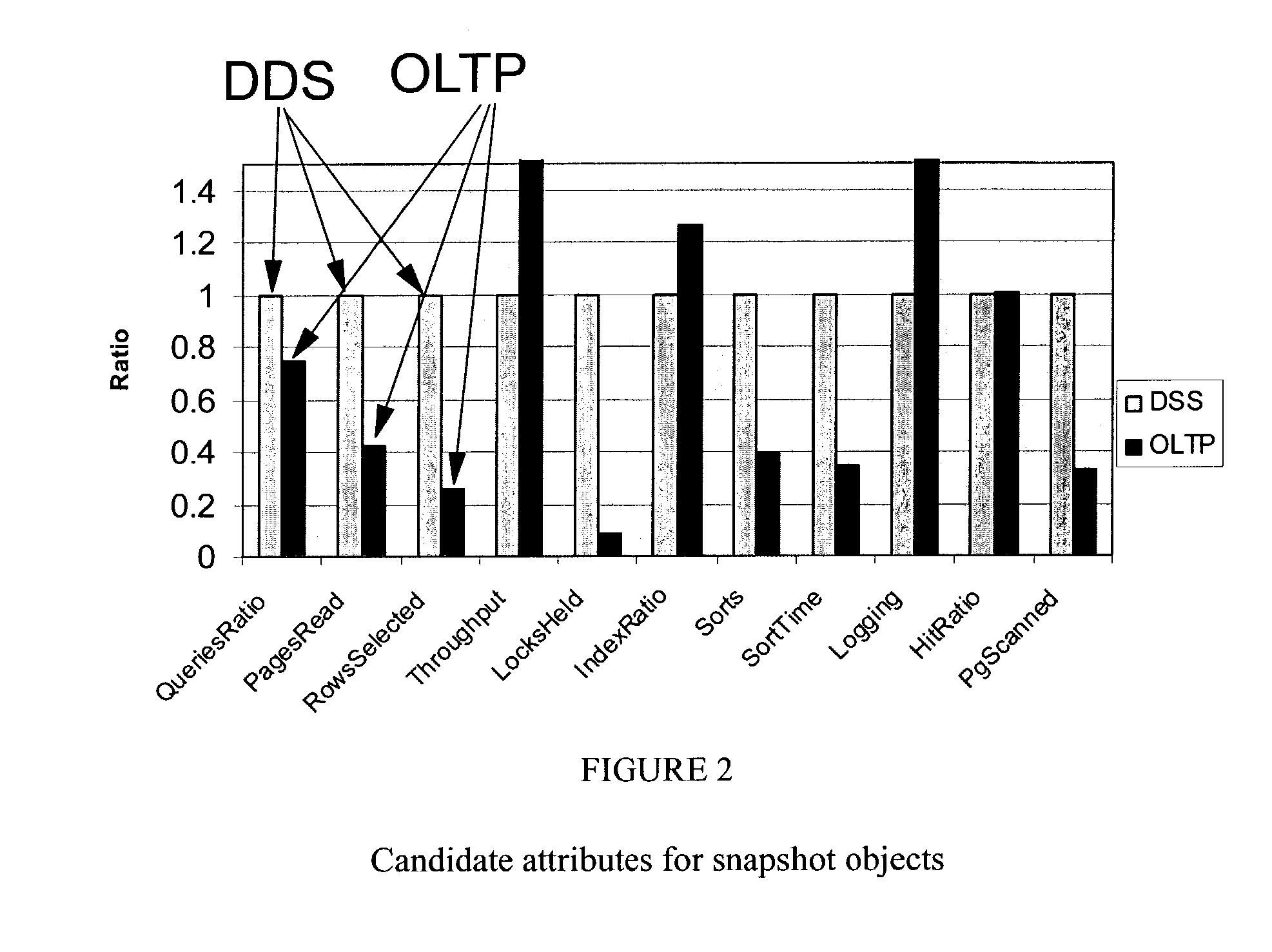Method for identifying a workload type for a given workload of database requests
a database request and workload type technology, applied in the field of information retrieval systems, can solve the problems of difficult to provide the workload classifier, performance variables, performance variables, etc., and achieve the effect of improving the operation of the autonomic dbmss and efficiently processing the workloads submitted
- Summary
- Abstract
- Description
- Claims
- Application Information
AI Technical Summary
Benefits of technology
Problems solved by technology
Method used
Image
Examples
Embodiment Construction
[0053]The following detailed description of the embodiments of the present invention does not limit the implementation of the invention to any particular computer programming language. The present invention may be implemented in any computer programming language provided that the OS (Operating System) provides the facilities that may support the requirements of the present invention. An embodiment is implemented in the C or C++ computer programming language (or other computer programming languages in conjunction with C / C++). Any limitations presented would be a result of a particular type of operating system, computer programming language, or data processing system and would not be a limitation of the present invention.
[0054]It may be appreciated that a workload classifier module (herein after called a classifier for simplifying the description) may contain computer programmed code in a form that is executable by a data processing system, or may contain a combination of hardware reg...
PUM
 Login to View More
Login to View More Abstract
Description
Claims
Application Information
 Login to View More
Login to View More - R&D
- Intellectual Property
- Life Sciences
- Materials
- Tech Scout
- Unparalleled Data Quality
- Higher Quality Content
- 60% Fewer Hallucinations
Browse by: Latest US Patents, China's latest patents, Technical Efficacy Thesaurus, Application Domain, Technology Topic, Popular Technical Reports.
© 2025 PatSnap. All rights reserved.Legal|Privacy policy|Modern Slavery Act Transparency Statement|Sitemap|About US| Contact US: help@patsnap.com



